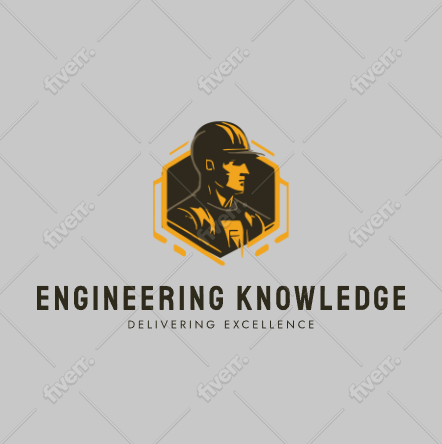Common types of shaft misalignment
What is pump-motor shaft misalignment?
- Misalignment is defined as an offset between two mating components. There are many causes of misalignment, but the most common is improper installation. Improper installation can be the result of many things, including incorrect mounting, poor assembly practices, and even damage during shipping.
Types of Shaft Misalignment
Three types of misalignment can occur in rotating shafts:
1). Angular misalignment,
2). Axial misalignment
3). Radial misalignment.
- Radial shaft misalignment occurs when the centerlines of two connected shafts are not parallel and there is a gap between them.
- Angular shaft misalignment occurs when the centerlines of two shafts are at an angle to each other rather than being parallel.
- Axial misalignment happens when the shafts are not aligned along the same axis and have different height levels.
Causes of Shaft Misalignment:
1). Improper Installation:
- Poor installation practices, such as incorrect coupling assembly, can often result in shaft misalignment. If not properly aligned during installation, the shafts may experience forces that cause them to shift out of their intended position. This can eventually lead to system failure and costly repairs.
2). Thermal Expansion:
- Temperature changes can cause the shafts to expand or contract, leading to misalignment. This is particularly common in machinery that operates at high temperatures or is subject to frequent temperature fluctuations. Additionally, if the components are made of different materials, they will expand and contract at different rates, causing further misalignment issues.
3). Wear and Tear:
- Over time, mechanical components can experience wear and tear, resulting in shifting or misalignment of the shafts. This is especially true for bearings, which can wear down and cause the shafts to shift out of position. Regular maintenance and replacement of worn components can prevent this type of misalignment.
4). External Forces:
- Shaft misalignment can also be caused by external forces, such as vibrations from nearby machinery or sudden impacts. These forces can cause the shafts to shift out of position, resulting in misalignment. It is important to secure the machinery properly and protect it from external forces to prevent misalignment.
Effects of Shaft Misalignment:
1). Increased Friction and Vibration:
- Shaft misalignment leads to an increase in friction and vibration between the shaft and its bearings, resulting in excessive wear and tear. The resulting friction and vibration can cause damage to critical components, such as bearings, couplings, and seals, leading to unscheduled downtime and costly repairs.
2). Premature Component Failure:
- Shaft misalignment can cause premature failure of components due to uneven loading, resulting in additional stress on the components. The misalignment also results in increased wear and tear, reducing the overall lifespan of the machinery. Bearings, couplings, and other components may need to be replaced more frequently than planned due to misalignment.
3). Decreased Efficiency:
- Shaft misalignment can cause a decrease in machinery efficiency due to the excessive energy required to overcome the increased friction. This increased energy consumption results in higher operating costs and reduced profitability. Inefficient machinery can have a significant impact on productivity, which can lead to decreased output and, ultimately, lost revenue.
4). Overall Performance Degradation:
- The negative effects of shaft misalignment ultimately lead to overall performance degradation. The machinery's ability to function at optimal levels reduces, leading to unscheduled downtime and increased maintenance costs. Continued use of the machinery in a misaligned state can exacerbate the issues, resulting in more severe damage and potentially rendering the machinery unusable.
Shaft Alignment Methods and Techniques:
1). The traditional methods:
- The straightedge and feeler gauge methods are among the most common traditional shaft alignment techniques. These methods involve aligning the shafts using simple tools, such as straight edges, rulers, and feeler gauges. Although these techniques are effective, they can be time-consuming and require a high degree of skill to achieve accurate results.
2). Laser Alignment Technology:
- laser alignment technology has become the preferred method for aligning shafts. This technique involves using specialized laser alignment equipment to measure and correct misalignment quickly and accurately.
"Compared to conventional techniques, laser alignment devices are quicker, more precise, and simpler to use, which decreases downtime and boosts output."
The benefits of using Laser Alignment Technology:
| Benefits | The Straightedge and Feeler Gauge Method | Laser Alignment Technology |
|---|---|---|
| Accuracy | Requires a high degree of skill to achieve accurate results | Highly accurate, reliable, and consistent results |
| Speed | Time-consuming | Quick and efficient, reducing downtime and increasing productivity |
| Ease of use | Requires a high degree of skill and training | Easy to use, with minimal training required |
| Flexibility | Not suitable for all applications | Suitable for a wide range of applications |
Solutions for Shaft Misalignment and Prevention:
1). Regular Maintenance:
- Proper maintenance and inspection of machinery is crucial for detecting and addressing potential misalignment issues. Regularly scheduled maintenance involves inspection of bearings, couplings, and other components for signs of wear and tear, alignment, and lubrication.
- Periodic monitoring of machine vibration levels and temperature can also help identify early signs of misalignment.
2). Proactive Measures:
Implementing proactive measures can help prevent shaft misalignment from occurring. These include:
Training: Providing training to technicians and operators on proper installation, maintenance, and operating procedures can help prevent misalignment caused by human error.
Design: Proper design of mechanical systems, including the layout, bearing selection, and consideration of environmental factors, can help prevent misalignment caused by external forces and thermal expansion.
Alignment Tools: Utilizing advanced alignment tools, such as laser alignment systems, can provide accurate and reliable results and help prevent misalignment caused by inaccurate alignment procedures.

.jpg)
.jpg)



.jpg)






.jpg)


0 Comments